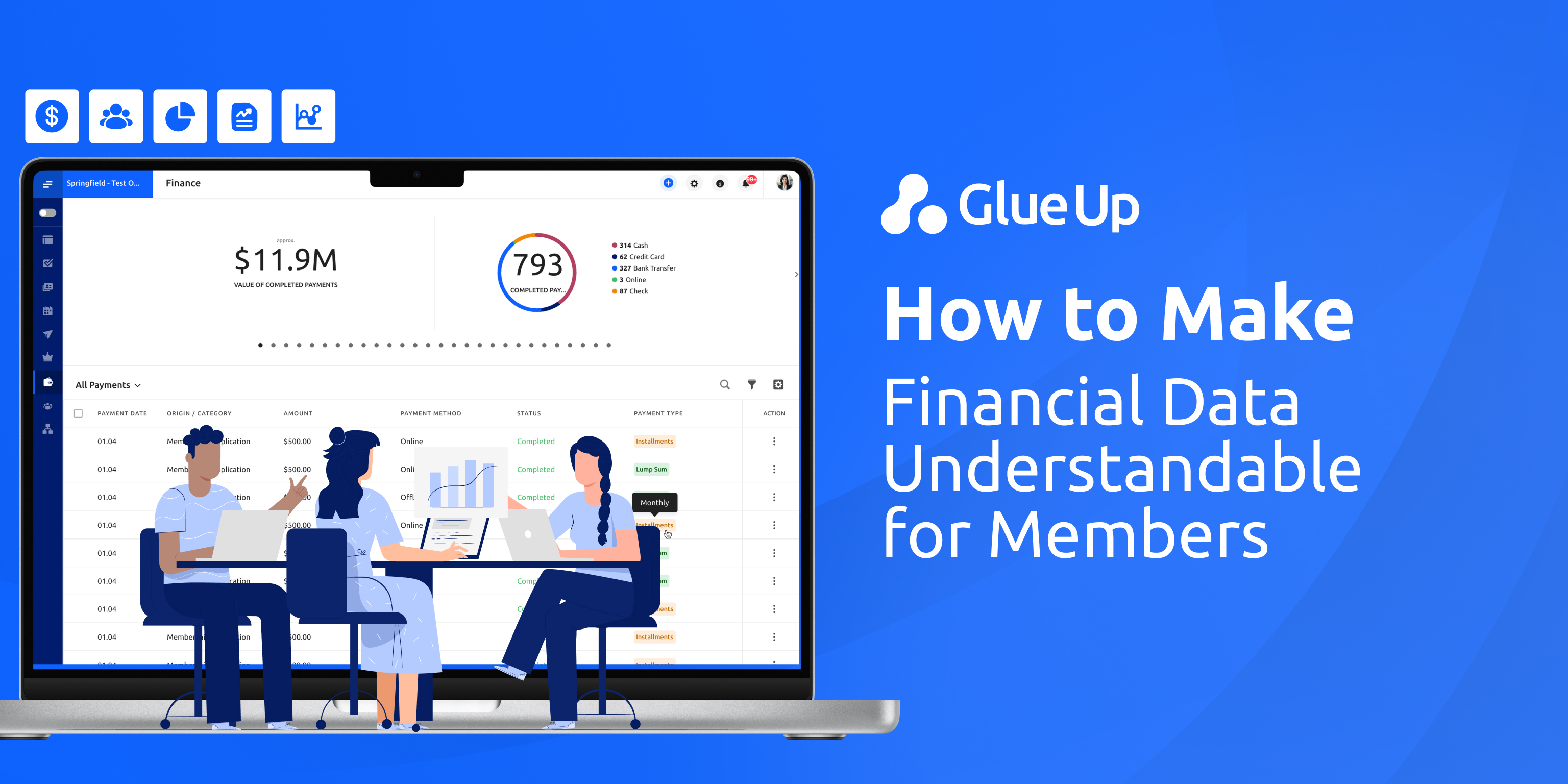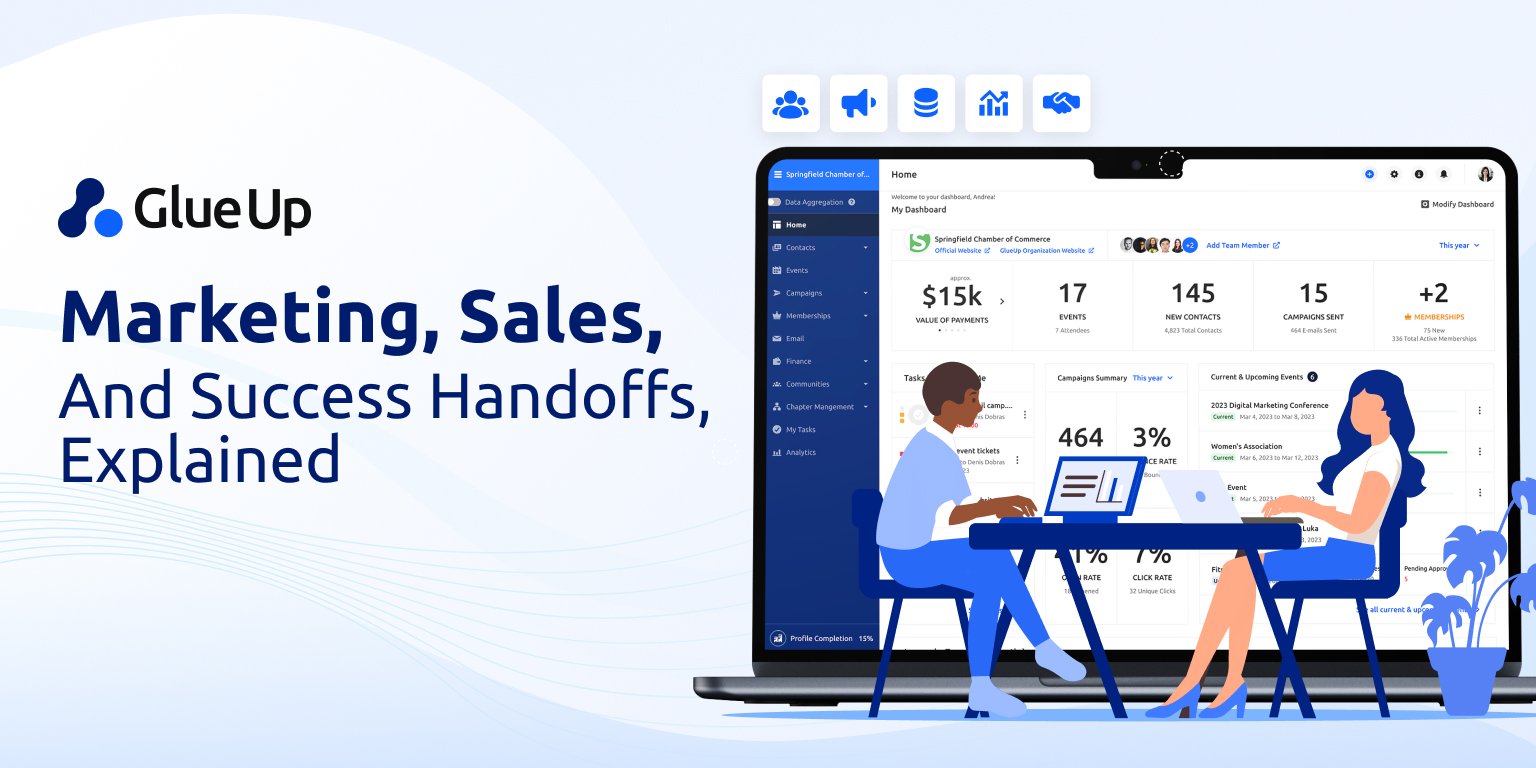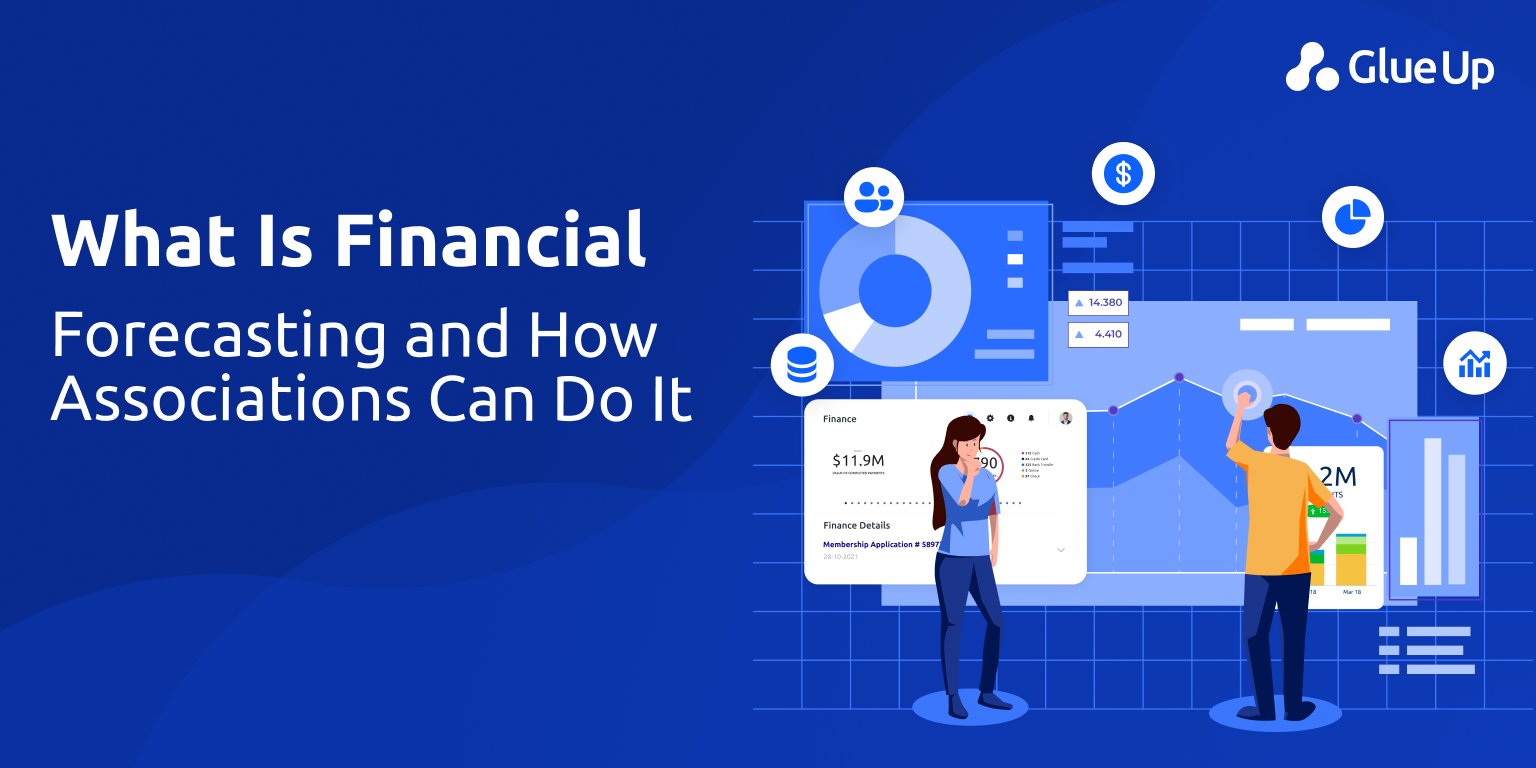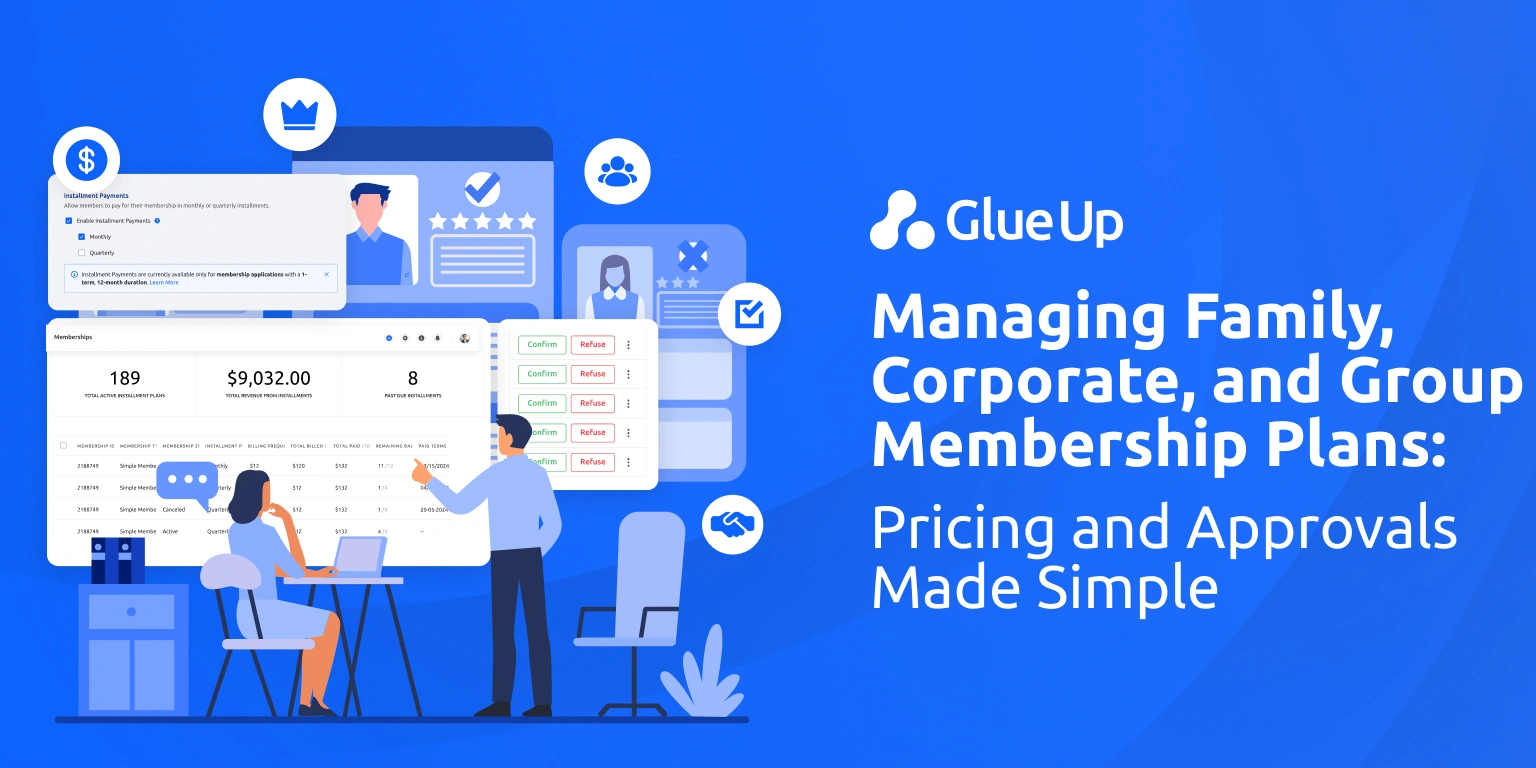
The first rule of surviving budget season? Control the chaos before it controls the room. Every board meeting starts the same way: a spreadsheet flickers on the screen, columns stretching endlessly, and someone pretending they understand. Simplifying financial data management stops being a back-office chore and starts becoming the difference between clarity and confusion, between confidence and quiet panic.
You can almost hear it, the low murmur as numbers blur into background noise, the awkward silence before someone finally asks, “So… are we in the red or not?” That single question exposes everything wrong with how most organizations communicate their finances.
Associations don’t lose credibility because of bad math. They lose it because the truth gets lost in translation. The story buried inside the data never reaches the people it’s meant to reassure.
And that’s the real point of simplifying financial data management, it’s giving numbers a voice members can understand.
Key Takeaways
- Associations lose credibility because financial storytelling fails. Simplifying financial data management means turning complex figures into narratives people can actually follow. When members understand the story behind the numbers, transparency becomes trust.
- Every financial report should fit into five clear blocks: Mission and Priorities, Money In, Money Out, Stability and Safety, and What’s Next. This structure helps members read numbers like they’d read a story. Over time, it teaches financial fluency and transforms reporting into leadership.
- Clean, well-labeled visuals outperform flashy dashboards. Use bar, line, waterfall, unit grid, and small-multiple charts, and avoid pies, stacked areas, and over-styled visuals. Good design is comprehension. Every unnecessary pixel adds friction, while clear visuals buy seconds of trust.
- Standardize one-page summaries, monthly metrics snapshots, and executive dashboards. Automate report generation through unified data sources like Glue Up’s Finance Suite and dashboards. This ensures accuracy, saves time, and keeps everyone aligned and informed.
- When financial data feels human, people relax and engage. Clear summaries, live “state of the finances” sessions, and AI-assisted explanations help members feel included in decision-making. Simplifying financial data management is a cultural shift that turns information into inclusion.
Quick Reads
- Advanced Tools for Secure Financial Management • Glue Up
- How to Model Cash Flow for Installment Plans? • Glue Up
- Simplify Chapter Multi-Currency Payment Processing • Glue Up
- What Is All-In-One Association Software? • Glue Up
- Elevate Association Management with our tools • Glue Up
- Association Transformation Through AI in Finance • Glue Up
- 5 Principles of Association Financial Transparency • Glue Up
- Practical Playbook for Membership Dues Management • Glue Up
Why Simplifying Financial Data Management Matters More Than Ever
Every association leader knows members crave transparency. But transparency is making people feel informed.
A 2023 OECD report on financial literacy found that over half of adults struggle to interpret basic financial concepts. That means even your sharpest members might not fully grasp your annual report. Simplifying means ensuring everyone, from a CPA to a volunteer, walks away with the same clear picture.
When financial data becomes understandable, you ignite confidence. Members stop asking “Where did the money go?” and start asking “What can we fund next?”
Glue Up often sees this in practice. Organizations using its dashboards for member updates discover something subtle yet powerful: financial reports stop being “required reading” and start being conversation starters.
That’s the real ROI of simplifying financial data management, it transforms compliance into connection.
The Five-Block Money Story
There’s a reason people remember stories more than spreadsheets. Neuroscience tells us the human brain processes narrative 22 times faster than raw data (Stanford Graduate School of Business, 2021). So, if your financial report reads like a codebook, no wonder eyes glaze over. Simplifying financial data management is reshaping them into a rhythm people instinctively understand.
That rhythm has five beats. We call it the Five-Block Money Story, a structure that works whether you’re a 50-member association or a 50 000-member global network. It’s a cognitive design.
1. Mission and Priorities
Start where every good story begins: purpose. Before you talk about dollars, remind people why those dollars exist. Spell out what you promised members this year: to expand certification programs, fund new scholarships, or digitize event experiences. Research from the Association for Psychological Science shows that linking financials to intention boosts recall and perceived trustworthiness by over 40%. Purpose grounds context.
2. Money In
This is your “origin story” in numbers: dues, sponsorships, grants, event revenue. Show trends. Compare to last year. Use color to show growth or shortfall. In behavioral finance terms, this reframes data from “snapshot” to “story arc.” People don’t remember static figures, they remember motion.
3. Money Out
Break expenses into real-world language: “Programs,” “Operations,” “Community Building.” Skip abstract terms like “General & Administrative.” When members see their dues funding outcomes: a conference, a mentorship platform, a public policy campaign; you turn spending into evidence of alignment. That’s transparency done right.
4. Stability and Safety
Every association worry about liquidity but rarely explains it well. Replace jargon with imagery. Instead of “unrestricted net assets,” say, “We have 4.5 months of cash runway.” Show your reserves visually, a gauge or thermometer that tells members, at a glance, we’re okay. Deloitte’s 2023 Nonprofit Financial Trends study found that organizations that reported liquidity in plain language enjoyed 17% higher board confidence scores. Simplicity is an upgrade in trust.
5. What’s Next
Close the loop. Tell them where the story is heading: decisions pending, risks emerging, opportunities unfolding. Maybe a new digital transformation project, maybe renegotiating a sponsorship, maybe preparing for economic uncertainty. This final block turns reporting into leadership. It says: We know where we’re going, and here’s how the numbers will take us there.
That’s the full arc, an honest structure. If a chart, sentence, or slide doesn’t fit into one of these five blocks, it’s probably clutter, and clutter kills comprehension.
The power of the Five-Block Money Story lies in repetition. When members see this same narrative month after month, they subconsciously start to “speak finance.” They learn what to look for, what healthy liquidity feels like, what a balanced budget looks like. That’s the quiet genius of simplifying financial data management, it trains understanding, builds trust muscle, and turns transparency into culture.
Translating Financial Standards into Human Language
The nonprofit sector is full of acronyms and regulatory speak. You’ve seen it: “ASU 2016-14 requires disclosure of liquidity and board-designated net assets.”
Important? Yes. Understandable? Absolutely not.
Members need the translation. Here’s how to turn financial jargon into everyday speech:
| Technical Term | Plain-Language Translation |
|---|---|
| Restricted funds | Money donors ask us to spend on specific programs. |
| Unrestricted funds | Money we can spend wherever it’s most needed. |
| Board-designated reserves | Our internal safety net for emergencies. |
| Days cash on hand | How long we can operate if new income stops. |
| Net assets | What we own after covering what we owe. |
Even the best audit loses meaning without interpretation. So give each term a single clear sentence. That simple exercise might be the single most effective act of simplifying financial data management you ever perform.
Visuals That Speak
The best visuals whisper clarity. Yet most financial presentations still look like a competition between Excel and anxiety. A slide full of gradients, legends, and unlabeled lines is camouflage.
Good design is translation. Research from MIT’s Human–Computer Interaction Lab shows people interpret visuals 60 000 times faster than text, but only if those visuals are clean and contextual. In other words, the more you decorate, the less they understand.
That’s where simplifying financial data management meets design thinking. The goal isn’t to make charts “look nice.” It’s to make meaning visible, fast.
The Visuals That Do the Heavy Lifting
When data gets complicated, visuals are your translators. But not all charts speak the same language, some whisper insight, others scream confusion. The goal of simplifying financial data management is to make them persuasive without pretending. The visuals below do the heavy lifting because they mirror how people naturally think.
Bar Charts
Bar charts are your everyday heroes: simple, direct, and built for comparison. They’re perfect for showing where money comes from (dues, events, sponsorships) or where it goes (programs, operations, admin).
Use horizontal bars when your labels are long, like comparing different chapters or revenue sources. Use vertical bars when you’re tracking time periods, such as quarter-to-quarter event income.
The secret is space and simplicity. Research from the Nielsen Norman Group shows people process comparative information 40% faster when categories are separated by equal spacing. The cleaner the alignment, the faster the comprehension.
Line Charts
If bar charts show differences, line charts show direction. They’re best for illustrating flow, cash balances over months, member renewals, or engagement growth.
But restraint is everything. Three lines max. Anything beyond that, and you’re building a maze. Each extra line increases cognitive load, and the human brain can only track about four moving variables before focus drops (Cleveland & McGill, 1984).
Keep the colors distinct, the scale honest, and the line smooth. A good line chart feels like a heartbeat: steady, readable, alive.
Waterfall Charts
Most people know what your total revenue was, few know how you got there. That’s where waterfall charts shine. They reveal cause and effect: where money started, where it rose, where it fell, and where it ended.
A waterfall chart can make even your toughest “budget vs. actual” story digestible. Imagine showing your members: “We began the quarter with $500K, invested $80K in marketing, gained $150K from sponsorships, and closed at $570K.” Suddenly, the story feels linear, human, and accountable.
McKinsey calls this “visual narrative accountability”, showing impact as motion rather than as a static table. It’s data storytelling that respects attention.
Unit Grids
Percentages don’t stick. Pictures do. A unit grid, typically a 10×10 square of small icons, transforms abstract ratios into something tangible. Each square represents 1% of your total budget or revenue.
Want to explain how dues are spent? Color 65 squares for programs, 25 for operations, and 10 for administration. Label it “Where every $100 goes.” Members see it, remember it, and share it.
That’s what behavioral design researcher Susan Weinschenk calls anchored comprehension, when the brain attaches emotion to proportion. It’s the science behind why visual simplification makes financial storytelling click.
Small Multiples
When your organization has multiple programs, chapters, or regions, small multiples are your best friend. Think of them as a grid of mini-charts, each one telling a small, related story.
Instead of one overcrowded chart trying to show everything, you get ten tiny ones, side by side. One glance, ten insights. It’s tidy, fair, and cognitively gentle, because the viewer compares patterns.
Edward Tufte, the father of modern data visualization, called this the “visual equivalent of paragraphs.” It lets readers scan, compare, and conclude, all without being overwhelmed.
When done right, these visuals teach your finances. They make members feel capable. They shrink the distance between your finance team and your audience until everyone’s reading from the same chart.
That’s the quiet brilliance of simplifying financial data management: it changes how people see your organization.
The Visuals That Sabotage Understanding
Some charts are visual gaslighting. They look sophisticated, move fast in presentations, and yet say almost nothing. They’re the reason half your members squint, nod, and then ask for the slides later (so they can pretend to “review” them).
The whole purpose of simplifying financial data management is to remove noise disguised as insight. You’re trying to inform. And that means recognizing the visuals that quietly destroy comprehension.
The Pie Chart That Ate Itself
The pie chart had a good run, around the time dial-up internet did. Anything beyond three slices, and it stops being a chart and starts being a geometry exam. Humans can’t accurately compare angles without a reference line (Cleveland & McGill, 1984). That’s why your seven-wedge “expense allocation” graphic doesn’t work.
Use a bar chart instead. Bars give your audience a straight baseline, and the human eye is far better at comparing lengths than areas. Save pies for celebrations.
The Stacked-Area Mirage
At first glance, stacked area charts look dynamic, like financial progress made visual. But when multiple colors bleed together, you lose scale integrity. The top layer hides what’s happening underneath.
To the untrained eye, that blur can suggest growth where none exists. When stakeholders think your net assets are rising because a gradient looks thicker, that’s unintentional deception.
If you must show composition over time, use a grouped bar chart or small multiples. They respect visibility and don’t flatten complexity into confusion.
The Dashboard That Thinks It’s a Rave
You’ve seen it: neon gradients, 3D bars, animated transitions. It looks futuristic until you try to read it. Over-styled dashboards are the UX equivalent of shouting. They replace clarity with spectacle.
A Deloitte report on finance visualization (2022) found that executives spend 30% longer deciphering “modernized” dashboards than minimal ones. That delay erodes confidence. People assume confusion equals complexity, and complexity feels unsafe.
So flatten it. Two-dimensional bars, consistent color meanings, and quiet backgrounds. Your visuals should sound like a calm voice in a loud room: steady, clear, reliable.
The Everything Graph
Another offender is the Frankenstein chart: bars, lines, shaded areas, and annotations all layered together in one graphic. It’s the visual version of a group chat with too many people talking.
The fix is restraint. If you can’t explain your chart in one sentence, your chart isn’t finished. Each visual should tell one story.
The “Looks Cool in PowerPoint” Effect
Aesthetic trends move fast. But the timeless rule of design still applies: form follows function. When your finance visuals lean too heavily on trends: gradients, abstract shapes, low-opacity backgrounds; you shift focus from meaning to mood.
Members don’t care if your charts look cinematic. They care if they can make sense of them in five seconds.
In financial storytelling, bad visuals waste trust. When people have to decode, they stop believing. Simplifying financial data management is about empathy disguised as design: meeting your audience where their attention actually lives.
Good visuals tell the truth faster. Bad visuals make the truth optional. Choose which kind of storyteller you want to be.
A Few Universal Rules
Label directly on the data. Don’t make readers chase a color key.
Use high contrast and color-blind-safe palettes. Accessibility is part of integrity.
Add a one-line takeaway beneath each visual. Example: “Cash reserves cover 4.2 months of operations.” That single sentence turns a graphic into a message.
Stay consistent. The same color should always mean the same thing. Your visuals should feel like a language members can learn over time.
When you strip a chart down to its honest bones, something magical happens, people stop admiring it and start understanding it. That’s cognitive empathy.
Every symbol you remove, every pixel of distraction you erase, buys your audience seconds of clarity, and seconds matter. Because in those moments, members stop feeling excluded and start feeling informed. And that’s the quiet, visual art of simplifying financial data management.
The Templates That Turn Data into Dialogue
If you want your reports to be read, they need to be designed for reading.
1. The One-Page Member Summary
Imagine if every member could grasp your financial position in 3 minutes. Here’s how to make it happen:
Header: Context in two sentences (“This quarter we grew program revenue and increased reserves”).
Five Tiles:
Money In: Simple bar chart by revenue source, with one line about change.
Money Out: Bar showing expenses by purpose.
Stability: Gauge or meter showing days cash on hand.
Reserves & Restrictions: Stacked bar showing donor-restricted vs. free cash.
What’s Next: Bullets of upcoming decisions (grant cycles, event funding, policy votes).
Footer: “Full financials available here → [link].”
By standardizing this one-pager, you’ll notice a cultural shift. People start discussing impact, not line items.
2. The Monthly Metrics Snapshot
Include:
Cash runway chart (months of coverage).
Revenue trend (rolling 12 months).
Expense mix (program vs. admin).
Member retention bar (goal vs. actual).
Then summarize three wins, three risks, and three next steps.
3. The Weekly Executive Dashboard
Executives need direction. This view shows:
Cash in/out over 14 days.
Dues renewal pipeline.
Event registrations vs. goal.
Variance flags beyond threshold.
These templates create alignment at every level: members, staff, board. And they all pull from the same source of truth, often via Glue Up’s reporting dashboards or integrations.
Automating the Process
The irony of financial transparency is that manual reporting makes it less reliable. Every manual export invite error, inconsistencies, and late nights before board meetings.
Automation safeguards trust.
Here’s the workflow many associations now adopt:
Unify data sources — general ledger, CRM/AMS, events, sponsorships.
Define metrics — document formula names, refresh cycles, owners.
Automate imports — nightly or weekly syncs.
Publish from one model — generate one-pagers and dashboards automatically.
Trigger alerts — when reserves dip or KPIs deviate.
How to Explain Financials Live (And Keep Members Awake)
You can send reports by email, but they’ll still land in an unread folder. Live storytelling changes everything.
Try hosting a 45-minute “state of the finances” webinar each quarter:
0–5 min: Frame the purpose (“You’ll leave knowing how stable we are and what’s next”).
5–15 min: Walk through the one-page summary, asking live poll questions (“Which area do you want us to expand next year?”).
15–30 min: Deep dive into one story (e.g., revenue diversification or event ROI).
30–40 min: Q&A (seed a few FAQs).
40–45 min: Wrap with takeaways, next key dates, and link to full reports.
This session is about contextualizing numbers. You can even record it and send a “Highlights from the Finance Session” email after.
That’s how simplifying financial data management transforms member communication, it humanizes accountability.
Metrics That Actually Matter
Every board deck is overflowing with KPIs. But most are vanity metrics, big numbers that say little.
Focus on these essentials:
Member-Level Metrics
Days cash on hand (liquidity).
Program vs. admin ratio.
Revenue by source.
Retention rate and new joins.
Event ROI (registrations, attendance, sponsor renewals).
Restricted vs. unrestricted grant balance.
Executive Weekly Metrics
Cash flow trends (past and next 2 weeks).
Renewal invoices outstanding.
Event goal tracking.
Variance alerts.
These tell the story of sustainability. And because they’re few, they stick in memory, the hallmark of simplification.
Training Teams to Stay Consistent
The best strategy collapses if your internal reports aren’t aligned.
Create a house style: set rules for chart types, colors, rounding, and date formats.
Build a data dictionary: one line per metric (definition, source, owner, refresh).
Host a weekly 10-minute “numbers huddle”: quick review of anomalies.
Run quarterly “chart clean-up” sessions: review real slides, fix clarity together.
The more standardized your visuals and phrasing become, the less cognitive friction members face. Every template they see reinforces brand clarity, and by extension, trust.
That’s the hidden brand power behind simplifying financial data management: it aligns perception.
The Emotional Core: Trust Through Clarity
When members see a number they understand, something profound happens, they relax. Their guard drops. They feel included.
Transparency is about radical clarity. It tells people, “We respect your right to understand.”
Publish your Form 990s and audits, yes. But don’t stop there. Pair them with short summaries, recorded explanations, and clear visuals.
When financial information feels human, members participate more, renew faster, and advocate louder. That’s how clarity compounds into loyalty.
The Glue Up Connection
Glue Up’s all-in-one platform brings this philosophy to life. Through its Finance Suite, CRM, and Manager App, associations can:
Visualize dues, renewals, and event revenue in real time.
Use the AI Copilot to generate plain-language explanations for board packets or webinars.
By using these tools, you’re simplifying financial data management across your entire organization. That means fewer silos, faster decisions, and more confident members.
Moving Forward
Numbers are not the enemy of clarity, complexity is.
When you apply storytelling, automation, and empathy to your financial communication, you turn a technical requirement into a strategic advantage.
The goal is to make members believers.
So, the next time someone opens your report and asks, “Where’s the money going?”, you’ll smile and say, “Let’s look together.”
And they will. Because now, finally, they can understand.



